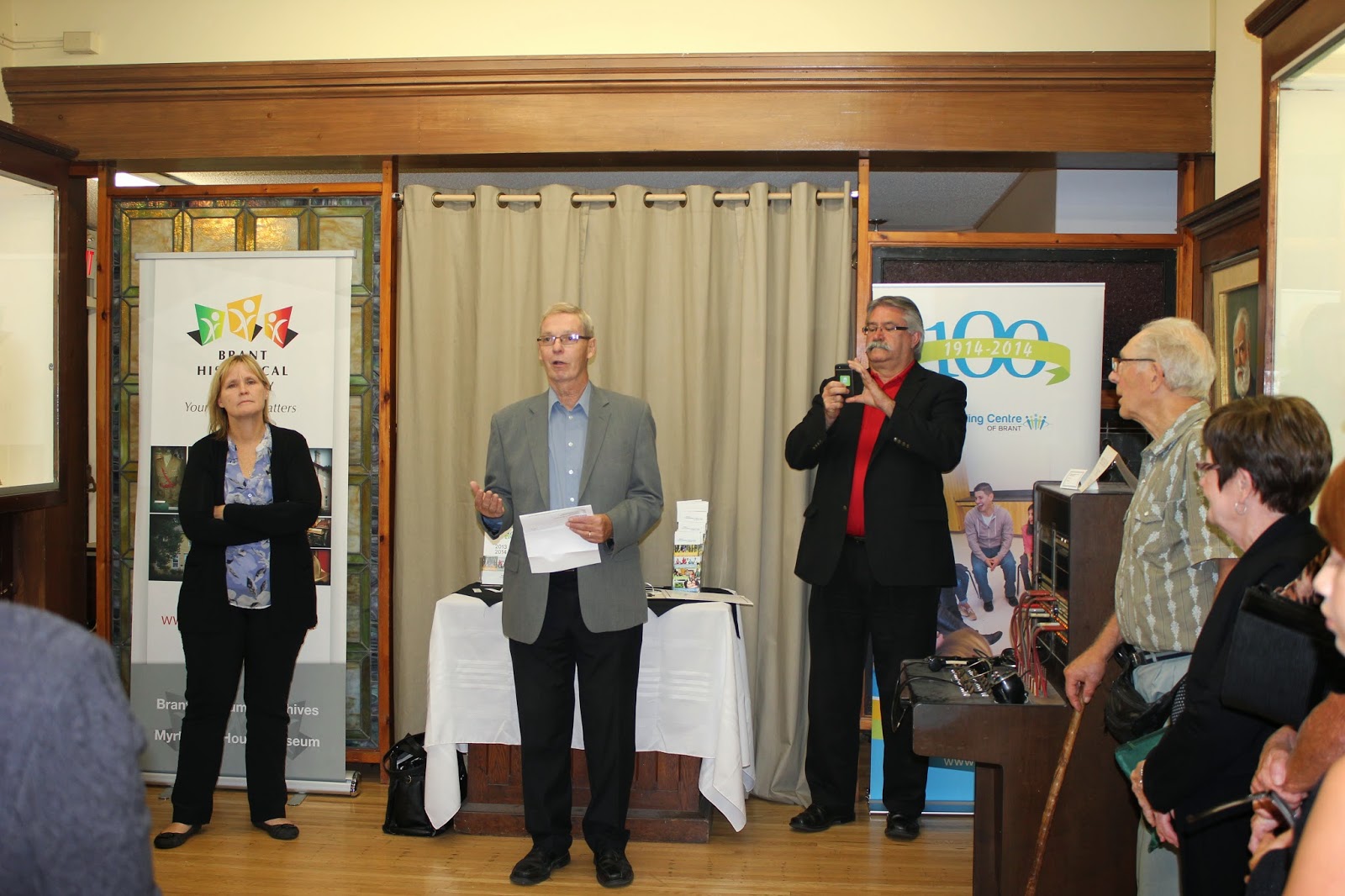This weekend marked the last in our series of Walking Tours
for this year with Brian Moore as he took us on his Monuments and Memorials Walk.
Although the day was cold and cloudy, the 15 people that attended
ensured that we were kept in the warmth of friendly company.
We started outside the armouries as we were given a brief
overview and were advised of the monument to commemorate the three battles from
the Boer War. On the one face are the
names of three individuals from Brantford who were killed during the Boer War
and the other three have pictures of the battles where their lives were
lost. It was dedicated on Victoria Day in
1903.
Our attention then focused on the Armoury itself as Brian
pointed out the official name is now “Sgt. William Merrifield VC Armouries”. National Defense wanted to raise awareness of
Victorian Cross recipients by renaming armouries. Sgt. William Merrifield was chosen for Brant
as he enlisted with the 4th Battalion, which originally captured
enlistees from Halton, Hamilton, Niagara, and as far west as Peel Region.
We then stopped briefly at Gore Park to be reminded that
this was with the original location of the World War I Memorial erected by the
Imperial Order of the Daughters of the Empire (I.O.D.E.). It has been moved just down the street to Tom
Thumb Park where the memorial current resides.
We briefly stopped across the street from Major Ballachey's House at the corner of Brant Ave. and Church Street. Major Ballachey served in WWI and was killed while performing his rounds with the 58th Battalion. Before the war, he served with the Board of Education and resigned from that position to serve in the war.
We continued on our journey to the next brief stop at Grace
Anglican to notice the stone work of their memorial tower that was also erected
as a monument to the war. After this, we
walked to the Bell Memorial where the park is wedge shaped, signalling the
breakdown of distance as a barrier by the invention of the telephone. Originally, this feature was built as a major
planning feature, where West Street would become a large boulevard to
facilitate movement from the train station to downtown. The original plans also called for a fountain
to be installed on the backside of the monument. Alexander Graham Bell made a speech stating
that the concept of the telephone was thought of in Brantford, not Boston like
others had been claiming.
Finally, we attended the Brant County War Memorial which was
dedicated in 1933. It was originally
constructed to remember those who died during WWI, but names have been added
from WWII, the Korean War, and the recent Afghanistan Conflict. It should be noted that the Six Nations was
the largest Aboriginal contributor to the war effort, but none of their names
are listed on the memorial, like Donald Brant.
This monument was constructed by Walter Seymour Allward, who also built the Bell Memorial and Vimy Ridge War Memorial.
The subsequent addition of the seven statues were meant to represent men
and ladies from each contingent (Army, Navy, and Air Force), but the women have
the additional representation of the Medical Corp.


































